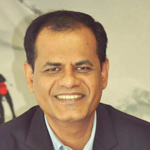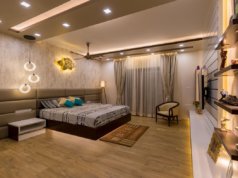 —Prashant Vatkar, Managing Director, HIL Ltd
—Prashant Vatkar, Managing Director, HIL Ltd
We understand that HIL’s three verticals have respective umbrella brands—Aerocon, Charminar and HYSIL. Tell us more.
These are brand names and not business verticals. The three business verticals are roofing, blocks & panels and advance polymer products. Roofing currently consists of fibre cement sheets under the brand name Charminar. Blocks consist of aerated autoclaved concrete blocks under the brand name Aerocon, Panels consists of intermediary walling solutions under the brand name Aerocon. Advance polymer products consist of CPVC and UPVC pipes and fittings under the brand name Aerocon. All these three business verticals are classified as building product segment. Thermal insulation products represent the next segment under the brand name Hysil.
Tell us about which Indian regions dominate your current business portfolio.
The eastern and central regions dominate the current roofing portfolio while south and west are dominant markets for the blocks portfolio.
What is today the acceptance level of prefabricated building components? Tell us how despite the possible high initial cost, prefab components can be cheaper in terms of lifecycle cost.
With considerable focus being accorded for reducing construction time, dry walling systems are fast gaining huge momentum. Besides reducing construction time, prefab structures also ensures savings in overall construction costs through lower manpower requirement and reduced dependency on construction material like sand, which are difficult to obtain, used in conventional wet walling systems. Flexibility in design and superior technical features like fire rating, insulation are added advantages in structures with prefabricated sandwich panels. Prefab structures with panels are most ideal in high seismic zones and can withstand earthquakes and wind speeds to a very large extent.
We understand that construction costs are rapidly rising due to labour getting expensive. Do you think such a trend would support the prefab building component industry?
Yes. Construction with prefab technology ensures reduction in manpower costs through faster construction time and usage of less manpower. This feature in prefab technology has been widely proven and has been a positive influence on increasing acceptability of construction using prefabricated structures.
We understand that HIL’s Surat plant is recongnized as the greenest plant for building products. Tell us more.
Yes, we received the prestigious CII Green Co Gold award for our Golan AAC block manufacturing plant (near Surat) in May 2013 and it is valid for 3 years. The plant is green in five respects:
- 70 per cent green raw material like fly ash – no carbon foot print
- Green manufacturing process – no gas emission, zero effluent discharge, water harvesting system and 100 per cent recycle of waste generated in process
- 90 per cent energy used is renewable (wind) energy.
- No by-products
- The finished product is recyclable
Tell us how HIL is contributing to the “green” cause with its products, manufacturing processes and the recyclability of its products.
HIL is committed towards producing green building products and solutions with an ultimate aim of helping the construction and infrastructure industry to build green and sustainable habitats. Aerocon AAC blocks and AAC panels are clear examples of the “green” initiatives.











